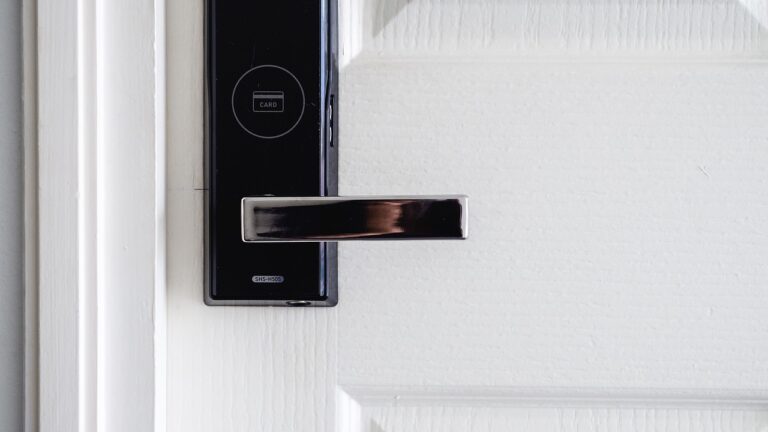Exploring Solar Panel Options for Commercial Buildings
allpannel, lotus bhai, allpaanel com mahadev book login: Solar energy is becoming increasingly popular in the commercial sector as businesses look for ways to reduce their carbon footprint and lower their energy costs. Solar panels can be a great investment for commercial buildings, offering a renewable energy source that can help offset electricity bills and provide a reliable source of power.
If you’re considering installing solar panels on your commercial building, there are a few different options to choose from. In this article, we’ll explore some of the most common types of solar panels used for commercial buildings and discuss the benefits and drawbacks of each.
Monocrystalline Solar Panels
Monocrystalline solar panels are made from a single crystal structure, making them highly efficient at converting sunlight into electricity. These panels are typically more expensive than other types of solar panels, but they also have a longer lifespan and higher efficiency ratings. Monocrystalline panels are a popular choice for commercial buildings where space is limited and maximum efficiency is a priority.
Polycrystalline Solar Panels
Polycrystalline solar panels are made from multiple crystal structures, which makes them slightly less efficient than monocrystalline panels. However, they are also more affordable and can be a good option for commercial buildings with larger roof spaces. Polycrystalline panels are a practical choice for businesses looking to generate a significant amount of solar power without breaking the bank.
Thin-Film Solar Panels
Thin-film solar panels are made from layers of photovoltaic material that are deposited onto a substrate, such as glass or metal. These panels are more lightweight and flexible than traditional solar panels, which can make them easier to install on certain types of commercial buildings. Thin-film panels are also more resistant to shading and can perform well in low-light conditions. However, they are typically less efficient than monocrystalline and polycrystalline panels.
Bifacial Solar Panels
Bifacial solar panels are designed to absorb sunlight from both the front and back sides of the panel, increasing their efficiency and power output. These panels can be a good choice for commercial buildings with reflective surfaces, such as white roofing materials or nearby windows. Bifacial panels are more expensive than traditional solar panels, but they can provide a higher return on investment over time.
Tracking Solar Panels
Tracking solar panels are mounted on systems that allow them to follow the sun throughout the day, maximizing their exposure to sunlight and increasing their efficiency. These panels are more expensive and complex to install than fixed solar panels, but they can generate significantly more power in certain locations. Tracking solar panels are a good option for commercial buildings with ample outdoor space and a high energy demand.
Building-Integrated Solar Panels
Building-integrated solar panels are designed to replace traditional building materials, such as roofing shingles or glass facades, while also generating electricity. These panels can be more aesthetically pleasing than traditional solar panels, as they blend seamlessly into the building’s design. Building-integrated solar panels can be more expensive than traditional solar panels, but they can provide a unique, sustainable solution for commercial buildings looking to incorporate solar energy.
FAQs:
Q: How much do commercial solar panels cost?
A: The cost of commercial solar panels can vary depending on the size of the system, the type of panels used, and the installation requirements. On average, commercial solar panel systems can range from $10,000 to $100,000 or more.
Q: What incentives are available for commercial solar panel installations?
A: There are several incentives available for commercial solar panel installations, including federal tax credits, state rebates, and solar renewable energy certificates (SRECs). These incentives can help offset the upfront costs of installing solar panels and provide ongoing savings on energy bills.
Q: How long does it take to recoup the cost of a commercial solar panel system?
A: The payback period for a commercial solar panel system can vary depending on factors such as energy usage, local electricity rates, and available incentives. On average, most commercial solar panel systems pay for themselves within 5 to 10 years.
Q: What maintenance is required for commercial solar panels?
A: Commercial solar panels are relatively low maintenance, requiring periodic cleaning to remove dirt and debris that can reduce their efficiency. It’s also recommended to have a professional inspection of the system every few years to ensure optimal performance.
Q: Can commercial solar panels be installed on any type of commercial building?
A: Solar panels can be installed on most types of commercial buildings, including offices, warehouses, retail stores, and manufacturing facilities. However, the feasibility and cost of installing solar panels will depend on factors such as roof space, orientation, shading, and structural integrity.
In conclusion, commercial solar panels can be a smart investment for businesses looking to reduce their carbon footprint and save money on energy costs. With a variety of options to choose from, you can find the right solar panel system for your commercial building that meets your energy needs and budget. Consider consulting with a solar energy professional to determine the best solar panel option for your specific business needs.







